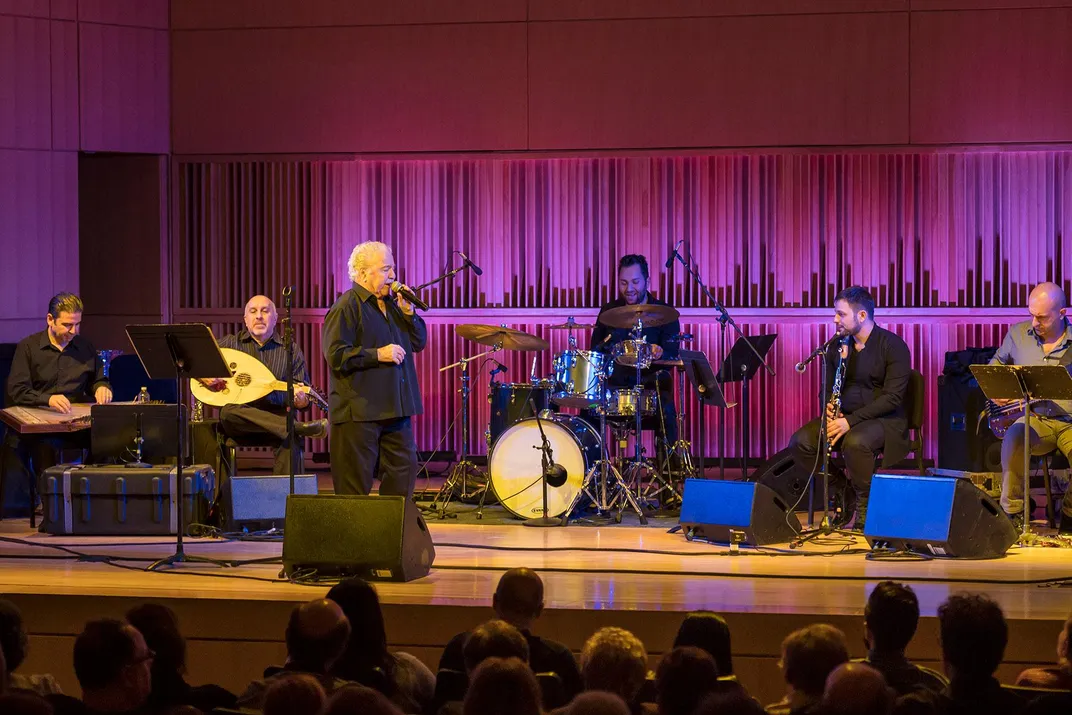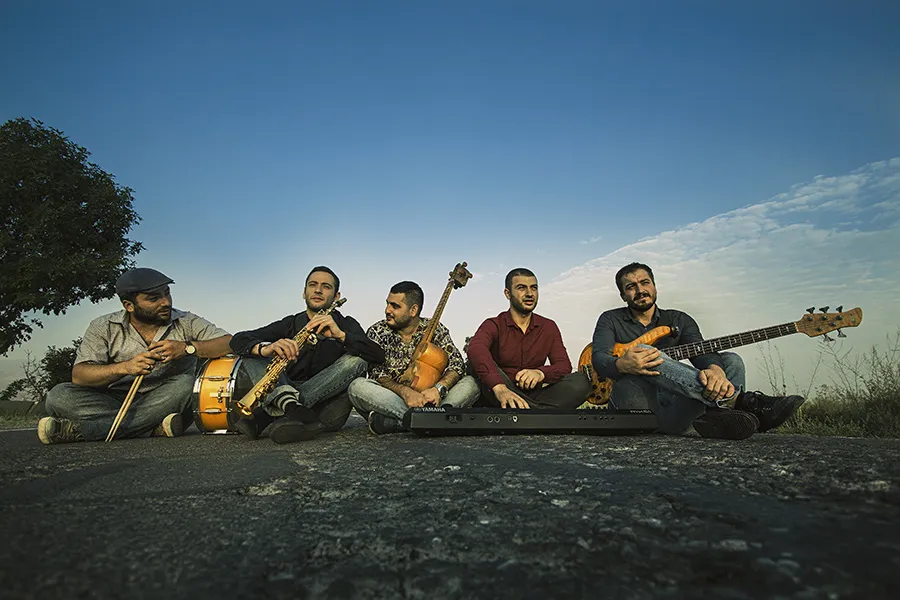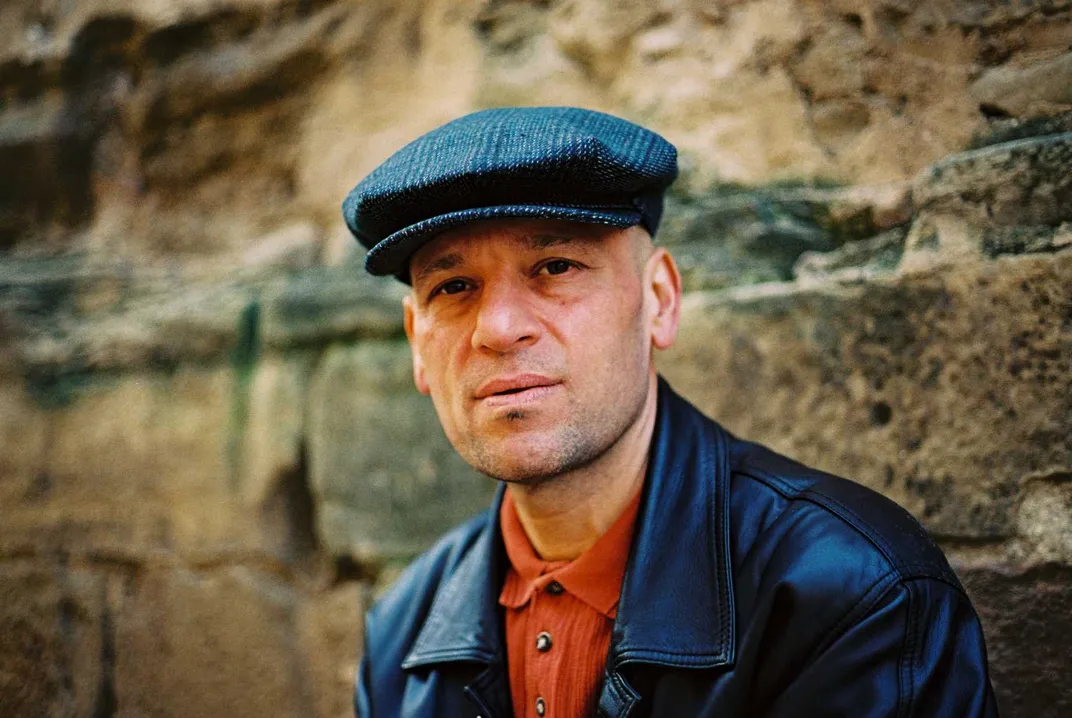These Soulful, Soothing Armenian Songs and Instrumentals Blend East With West
Performers from all over the globe gather with traditional instruments to perform at this year’s Folklife Festival
/https://tf-cmsv2-smithsonianmag-media.s3.amazonaws.com/filer/91/a8/91a865d7-3f7d-4520-9082-5557290e6c78/screen-shot-2018-06-27-at-35459-pm.jpg)
One of the first times that Ara Dinkjian performed on stage with his father was in New York City during the 1964 World’s Fair. Dressed in a costume that his mother sewed consisting of baggy pants, a colorful shirt and a vest with ornaments, he played the doumbek, a hand drum, in front of crowds of people. The performance was part of a celebration of Armenia.
“I grew up in a home where music was as common as eating every day,” Dinkjian says now. “There was constantly singing and instruments in the house.” That’s because his father is Onnik Dinkjian, a renowned musician of Armenian heritage. “There was never a question of, ‘Who am I and what do I want to do with my life?’” the younger Dinkjian says.
Dinkjian and his father will once again perform together, on stage at the upcoming Smithsonian Folklife Festival. They will join other Armenian musicians, plus artisans, designers and cooks on the National Mall as part of the annual event. The program is called “Armenia: Creating Home.”
The Smithsonian Center for Folklife and Cultural Heritage, which hosts the festival, got involved in Armenia in 2014 as part of the My Armenia project, which works with the local people to enhance cultural heritage sites there. The festival is built on research from that initial project, according to Halle Butvin, curator of the Armenia program. Butvin says she has made so many trips to Armenia since 2014 to prepare for the festival that she lost count.
“There’s a tradition in Armenia of inviting strangers into the home,” Butvin says. “Armenian families will invite you to sit at their dinner no matter who you are. They’ll bring you to the table and feast with you and make you part of the home.” At the festival, she says, “I’m hoping that people feel that, that there’s this space for connection.”
While most of the participants in the festival’s Armenian program live in the Republic of Armenia, a small country situated in between the Middle East and Eastern Europe, others are from the diaspora community. As the Folklife Center points out on its website, in the last century, Armenia endured much conflict, causing displacement. Two of those members of the diaspora are Dinkjian, who was born in the United States, and his father, who was born in Paris. “My American roots as well as my Armenian roots show up in various degrees in my compositions,” says the musician. “My ancestors reside in my blood. . . . You can be Armenian no matter where you’re born.”
At the festival, the Dinkjian performance will include a dialect that Armenians once spoke in his grandparents’ hometown. “There hasn’t been an Armenian born there in over 50 years,” he says. “You will hear a dialect that is on the verge of being extinct.” Besides appearing with his father, Dinkjian will also perform with The Secret Trio, a band whose other members are Turkish and Macedonian. His main instrument is the oud, a fretless lute.
Another musician at the festival, the Grammy-award winning Arto Tunçboyacıyan, who is based in Yerevan, the capital of Armenia, also grew up around music and began performing at a young age. His brother would perform at nightclubs and brought him along. “There was one point I have to make a decision: I’m going to be a football player—soccer—or music. I couldn’t see myself at 40 years old, or 45 years old, hanging out, side of the field, and screaming [at] the people how to play,” he jokes. But “the music I can do just even before the last breath.” To him, Armenian music blends aspects from the East and West. “We always leave one little door open” to those various cultures, he says.
Some 50 years after that first performance, Tunçboyacıyan describes his sound as avant-garde folk. He will perform at the festival with members of the Armenian Navy Band, which he founded in 1998.
Yet another Yerevan-based musician who started performing as a child, Miqayel Voskanyan, will perform at the festival with Miqayel Voskanyan and Friends, also known as MVF Band. He plays the tar, an Armenian folk instrument. While musicians often use the tar for classical music, he pairs it with instruments such as the saxophone, drums and keyboard, for a unique sound that he describes as “mostly folk with jazz-fusion combinations.”
Voskanyan says he hopes Folklife Festival visitors will learn “about a new instrument, about tar,” as well as about his style of folk music. “It’s a very important to show others very different sides of Armenian culture,” he says.
Also performing is Zulal, an a capella Armenian-American group that revisits ancestral folksongs; the Kayt Band playing the traditional drum and wind instruments, called the dhol, zurna and blul; and the Qanon Ensemble under the tutelage of composer and teacher Tsovinar Hovhannisyan.
In addition to the music, the festival will feature Armenian cooks, winemakers and artisans. The cooks will offer demonstrations and bake lavash flatbread. Attendees will be able to learn about the 2011 discovery in a cave on the edge of the Areni village of what researchers believe is the world’s oldest winemaking facility, from approximately 4100 B.C.E. The festival will feature a “dig tent” for kids and a virtual reality experience for people to “explore” the real archaeological site. Craftspeople who work with clay, fabric, metal, stone and wood, will be there, as will be shadow-theater troupe and dance workshops. A separate festival program is devoted to traditions from Catalonia.
“It’s really about cultural understanding,” says Butvin, the curator. “We hope that it’s a process of engagement and of connection between different cultures…. People start thinking about their own backgrounds and where they came from and what they care most about, and then they can use that as a way to connect into someone else’s culture.”
Dinkjian, the oud player, has a different take: “I think Armenia is not so well known except for certain people, like the Kardashians,” he says. “I’m hoping that of course the world knows of who we are, what our contributions have been, because they are very significant.”
The Smithsonian Folklife Festival is open on Washington, D.C.’s National Mall from June 27 to July 1, and July 4 to 8.
/https://tf-cmsv2-smithsonianmag-media.s3.amazonaws.com/accounts/headshot/MAx2.jpg)



/https://tf-cmsv2-smithsonianmag-media.s3.amazonaws.com/filer/2d/f4/2df4489b-de41-4094-9527-b79b5d275eaa/dsc00055_orig.jpg)






/https://tf-cmsv2-smithsonianmag-media.s3.amazonaws.com/accounts/headshot/MAx2.jpg)